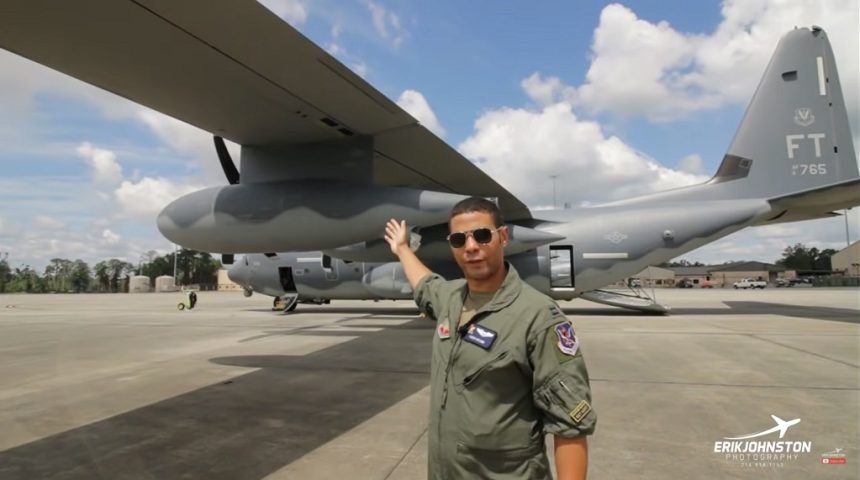The HC-130J is the only dedicated fixed-wing Personnel Recovery aircraft of the U.S. Air Force, which supports long-range rescue missions thanks to its extended endurance.
Following the walkaround tours of the HH-60G Pave Hawk and HH-60W Jolly Green II rescue helicopters, we now complete the feature about the Personnel Recovery assets of the U.S. Air Force with the HC-130J Combat King II. The HC-130J is the only dedicated fixed-wing Personnel Recovery platform in the Air Force inventory, based off the KC-130J and modified with improved navigation, threat detection and countermeasures systems.
Our friend Erik Johnston was guest of the 71st Rescue Squadron at Moody Air Force Base, Georgia, and filmed this walkaround tour with the help of Capt. Kyle “Fuego” Kryder, HC-130J pilot, Capt. David Saunders, HC-130J Combat Systems Officer, and SSgt. Philip Straley, HC-130J loadmaster, each illustrating some of the details about their area of expertise on the aircraft.
The tour begins on the outside with the pilot showing some of the features that differentiate the Combat King II from the regular KC-130J Super Hercules tanker. Among those features we can find the defensive systems, like the Missile Warning Sensors (MWS), Radar Warning Receiver (RWR) and Large Aircraft InfraRed CounterMeasures (LAIRCM), which protect the aircraft during Combat Search And Rescue (CSAR) mission in hostile environments.
The Combat King II also has an array of different antennas for its radios. An interesting detail shown in the video is that the lower antennas are covered with duct tape to protect them from gravel during operations from austere locations, so these easily breakable components are protected as much as possible. Operations from short unimproved runways are one of the main missions of the HC-130J, which allows more flexibility in an operational environment abroad.
One of the main capabilities of the HC-130J, inherited from the KC-130J, is the Helicopter Air-to-Air Refueling (HAAR) thanks to the two pods under the wings that allow the refueling of two helicopters at the same time both during day and night. The pods, however, can also allow refueling on the ground through their Rapid Ground Refueling port, a capability especially useful when there is the need to set up a Forward Arming and Refueling Point (FARP) to support other aircraft during a long-range mission.
The Combat King II has a modern user-friendly glass cockpit, with Head Up Displays (HUDs) and plenty of Head Down Displays (HDDs) to show all the info needed by the crew. An interesting detail of the C-130 series aircraft if that the power levers, usually referred on other aircraft as throttle, are used to regulate the horsepower setting of the four engines, instead of the revolutions per minute (RPMs) setting.
The HDDs are not reserved only for the pilots, as the CSO has three more of them at his disposal just behind the cockpit. Through his displays, the CSO can manage the Low Power Color Radar, the AN/AAS-54 Electro-Optical/Infrared (EO/IR) sensor, datalinks, radios, countermeasures as well as the Communication, Navigation and Identification Management Unit (CNI-MU) and fuel systems.
During operational missions as part of a large package of aircraft, the CSO receives a lot of info from different sources. The quantity of data could be overwhelming for the smaller crews on the helicopters or support aircraft, so he acts as a filter and sends to every asset exactly what they need to build their Situational Awareness and complete the mission.
The tour ends in the cargo compartment, where the loadmaster shows the impressive quantity of equipment that is available on the aircraft, from the emergency hatches and ladder to the cargo equipment. The HC-130J even has a small toilet in the back for longer flights. One of the most interesting pieces of equipment is the system of colored lenses used by the loadmaster to send signals to the helicopters during air-to-air refueling. Even if such an old school system, with just a flashlight shining through the lenses, may seem strange on a modern aircraft like the Combat King II, it is still a pretty effective way to quickly communicate without breaking the radio silence.









